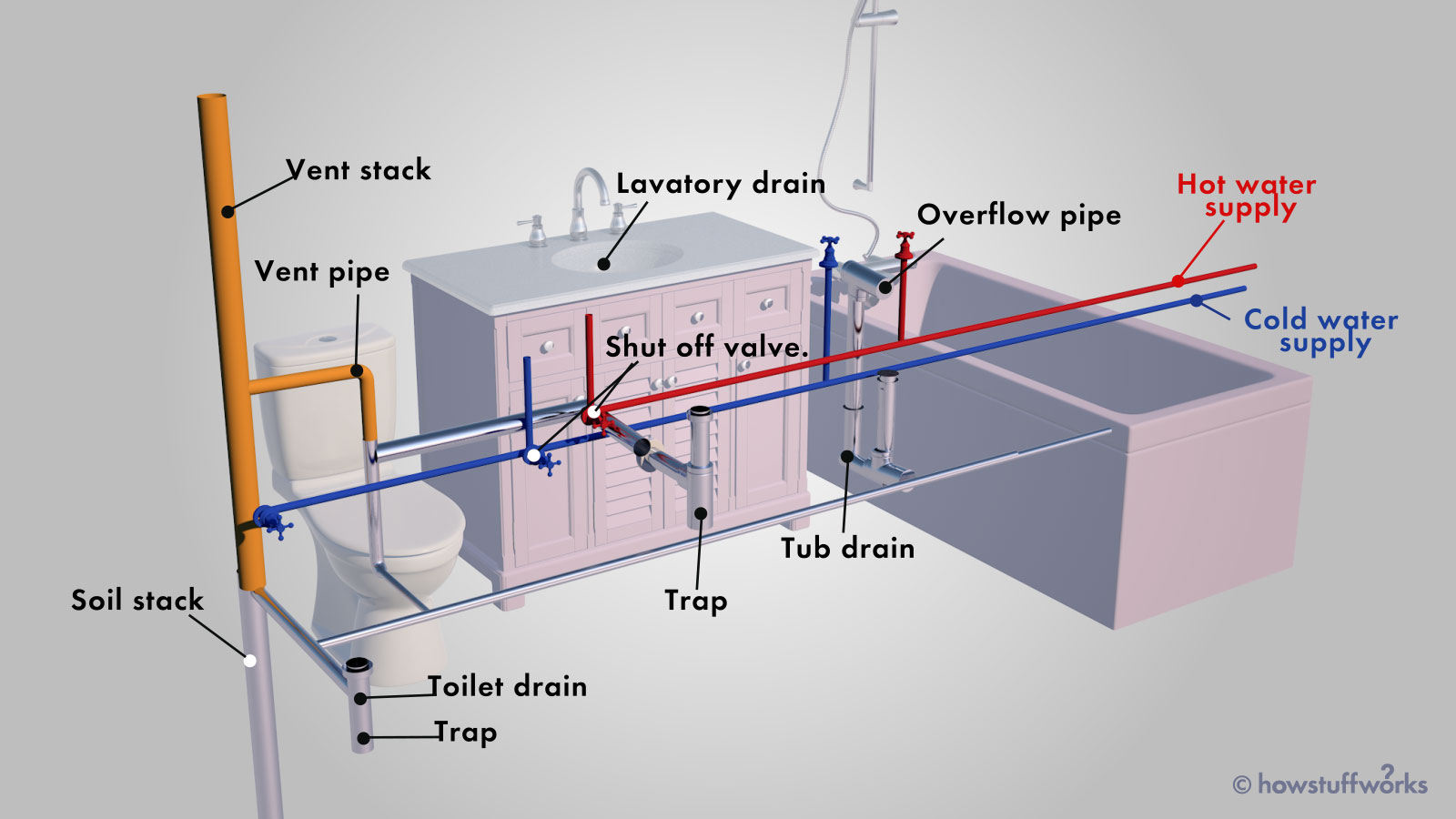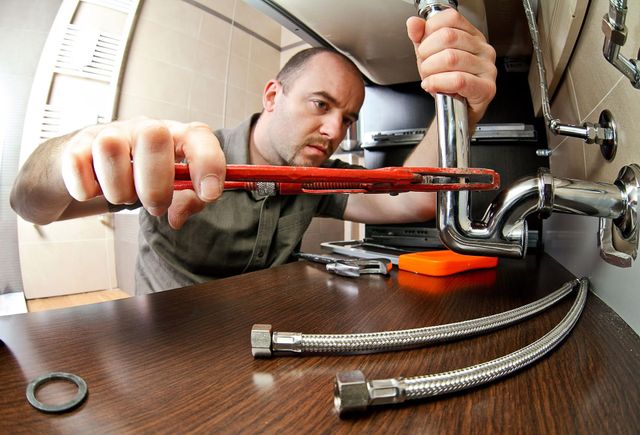What're your opinions regarding Understanding Your Home's Plumbing Anatomy?

Understanding just how your home's plumbing system works is crucial for each homeowner. From providing clean water for alcohol consumption, cooking, and bathing to securely eliminating wastewater, a properly maintained plumbing system is important for your family members's health and comfort. In this thorough overview, we'll discover the complex network that makes up your home's plumbing and deal ideas on upkeep, upgrades, and handling typical problems.
Introduction
Your home's plumbing system is more than just a network of pipelines; it's an intricate system that guarantees you have accessibility to clean water and effective wastewater removal. Understanding its parts and just how they work together can assist you protect against pricey repairs and guarantee whatever runs smoothly.
Fundamental Elements of a Pipes System
Pipelines and Tubes
At the heart of your pipes system are the pipelines and tubes that lug water throughout your home. These can be made of various materials such as copper, PVC, or PEX, each with its benefits in terms of sturdiness and cost-effectiveness.
Components: Sinks, Toilets, Showers, and so on.
Fixtures like sinks, commodes, showers, and bath tubs are where water is made use of in your house. Understanding exactly how these components attach to the plumbing system helps in identifying troubles and intending upgrades.
Valves and Shut-off Points
Valves regulate the flow of water in your plumbing system. Shut-off shutoffs are critical throughout emergency situations or when you require to make fixings, permitting you to isolate parts of the system without disrupting water flow to the whole residence.
Water Supply System
Main Water Line
The main water line attaches your home to the local water system or a personal well. It's where water enters your home and is distributed to numerous components.
Water Meter and Pressure Regulator
The water meter actions your water use, while a pressure regulatory authority guarantees that water flows at a secure stress throughout your home's plumbing system, protecting against damage to pipelines and components.
Cold Water vs. Warm water Lines
Understanding the difference in between cold water lines, which provide water straight from the primary, and warm water lines, which bring warmed water from the water heater, aids in troubleshooting and planning for upgrades.
Water drainage System
Drain Pipes Pipeline and Traps
Drain pipelines carry wastewater away from sinks, showers, and bathrooms to the sewage system or sewage-disposal tank. Catches protect against drain gases from entering your home and additionally trap particles that can cause clogs.
Ventilation Pipelines
Ventilation pipelines allow air into the water drainage system, preventing suction that can slow down drain and create catches to empty. Correct ventilation is essential for keeping the integrity of your plumbing system.
Relevance of Correct Drainage
Guaranteeing proper drainage stops backups and water damages. On a regular basis cleaning drains pipes and preserving catches can protect against expensive fixings and prolong the life of your plumbing system.
Water Heating Unit
Sorts Of Water Heaters
Water heaters can be tankless or traditional tank-style. Tankless heating units warm water on demand, while storage tanks store warmed water for prompt usage.
Upgrading Your Pipes System
Factors for Updating
Upgrading to water-efficient fixtures or changing old pipes can boost water top quality, reduce water bills, and raise the value of your home.
Modern Pipes Technologies and Their Benefits
Check out technologies like clever leakage detectors, water-saving bathrooms, and energy-efficient hot water heater that can save cash and decrease environmental effect.
Cost Considerations and ROI
Compute the upfront costs versus long-lasting cost savings when taking into consideration pipes upgrades. Lots of upgrades pay for themselves via reduced utility expenses and less repairs.
Just How Water Heaters Connect to the Pipes System
Recognizing how water heaters link to both the cold water supply and warm water circulation lines assists in diagnosing problems like not enough hot water or leakages.
Maintenance Tips for Water Heaters
Routinely flushing your hot water heater to eliminate debris, inspecting the temperature level settings, and evaluating for leakages can prolong its life-span and improve energy efficiency.
Common Plumbing Issues
Leakages and Their Causes
Leaks can happen as a result of aging pipelines, loose fittings, or high water stress. Dealing with leakages immediately avoids water damages and mold development.
Clogs and Obstructions
Obstructions in drains pipes and toilets are frequently caused by purging non-flushable things or an accumulation of grease and hair. Using drainpipe displays and bearing in mind what decreases your drains can protect against obstructions.
Indications of Plumbing Problems to Expect
Low tide stress, sluggish drains, foul odors, or abnormally high water costs are indications of prospective plumbing troubles that must be dealt with promptly.
Pipes Maintenance Tips
Regular Evaluations and Checks
Schedule yearly pipes evaluations to capture concerns early. Search for indicators of leaks, corrosion, or mineral accumulation in taps and showerheads.
Do It Yourself Maintenance Tasks
Straightforward tasks like cleansing faucet aerators, looking for bathroom leakages making use of color tablets, or shielding subjected pipes in cool environments can prevent major pipes issues.
When to Call a Professional Plumber
Know when a pipes issue needs professional competence. Attempting intricate repair work without correct knowledge can cause more damage and higher fixing costs.
Tips for Minimizing Water Usage
Easy behaviors like repairing leakages immediately, taking much shorter showers, and running full tons of washing and meals can preserve water and lower your utility costs.
Eco-Friendly Plumbing Options
Think about lasting plumbing materials like bamboo for flooring, which is durable and green, or recycled glass for counter tops.
Emergency situation Preparedness
Steps to Take During a Pipes Emergency situation
Know where your shut-off shutoffs are located and just how to switch off the water system in case of a ruptured pipeline or major leak.
Value of Having Emergency Situation Calls Convenient
Keep get in touch with info for neighborhood plumbers or emergency services conveniently offered for fast response during a plumbing crisis.
Environmental Effect and Preservation
Water-Saving Components and Devices
Mounting low-flow taps, showerheads, and toilets can significantly decrease water usage without compromising efficiency.
Do It Yourself Emergency Situation Fixes (When Suitable).
Momentary solutions like making use of air duct tape to spot a dripping pipeline or positioning a pail under a trickling faucet can minimize damages till a specialist plumbing professional gets here.
Verdict.
Recognizing the composition of your home's plumbing system empowers you to keep it properly, conserving money and time on repair work. By following regular upkeep regimens and staying educated concerning contemporary plumbing modern technologies, you can guarantee your plumbing system operates effectively for many years to come.
Exploring Your Homes Plumbing Anatomy
Water Supply System
Main Water Line: This is where water enters your home from the municipal supply or a private well. Water Meter: Typically located near where the main water line enters the property, it measures the amount of water used. Shutoff Valve: It s crucial to know where this is in case of emergencies. It allows you to turn off the water supply to the entire house. Pipes and Fittings: These distribute water throughout your home. Materials can include copper, PVC, or PEX. Drain-Waste-Vent (DWV) System
Drains: Located in sinks, showers, and tubs, these carry wastewater away. Traps: U-shaped pipes under sinks that hold standing water, blocking sewer gases from entering the home. Vents: Pipes that lead from the DWV system to the outside, preventing vacuum formation and allowing gases to escape. Sewer Line: Carries all wastewater from the home to the municipal sewer system or a septic tank. Fixtures and Appliances
Sinks, Toilets, and Showers Dishwashers and Washing Machines Water Heaters Maintenance Tips
Regularly check for leaks in exposed pipes and around fixtures. Inspect the water heater annually for signs of wear. Clean drains and traps to prevent clogs and odors. Know how to shut off water to individual fixtures. When to Call a Professional
Major leaks or burst pipes Installation of new pipes or fixtures Septic tank issues Remodeling projects that involve plumbing changes Conclusion
Understanding the anatomy of your home's plumbing is key to maintaining a functional and efficient system. Regular checks and knowing when to call in the experts can save you time, money, and stress.
https://www.mavyn.com/blog/exploring-your-homes-plumbing-anatomy

I was brought to that write-up about The Inner Workings of Your Home's Plumbing from someone on another web address. Don't hesitate to pause to promote this article if you enjoyed it. Thank you for your time spent reading it.
Visit My Web Page